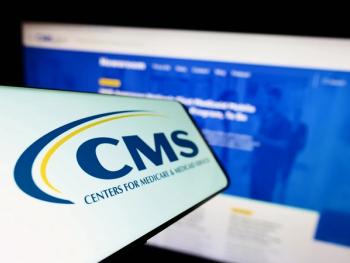
Access to novel therapies for Duchenne muscular dystrophy—Insights from expert treating physicians
A number of physicians experienced in treating DMD across the nation contributed to this article recently published in the Annals of the Child of Neurology Society.
Duchenne muscular dystrophy (DMD) is a rare, X‐linked, progressive, degenerative muscle disease due to pathogenic variants in the DMD gene resulting in absence of functional dystrophin protein.
Patients with DMD have irreversible muscle damage that begins at birth, and there is histologic evidence of disease progression with progressive inflammation and fibrosis within the first years of life. Proactive interdisciplinary care, corticosteroids, and advances in disease‐modifying treatments have changed the trajectory of the disease, leading to slower progression and improving life expectancy.
This statement from clinicians who care for patients with DMD aims to provide insights into the current therapeutic landscape and access to novel therapies for DMD.
Recent years have seen a remarkable number of clinical trials to evaluate the disease‐modifying ability of novel therapies for DMD. In addition to corticosteroids (deflazacort and vamorolone), several gene‐targeted therapies were approved by the FDA.
These include exon‐skipping agents (eteplirsen, golodirsen, viltolarsen, and casimersen) that restore the reading frame of DMD transcripts and delandistrogene moxeparvovec‐rokl, an adeno‐associated virus–based microdystrophin gene transfer therapy.
Further, there is a robust pipeline of targeted gene‐ based therapies and treatments targeting downstream path- ways such as regulating muscle fiber degeneration and regeneration. While existing treatments offer benefits by delaying or slowing disease progression, none provide a cure.
The emergence of treatments that target the disease through multiple mechanisms underscores the importance of assessing combination therapies for DMD, akin to approaches used in treating oncological disorders.
Given the progressive and irreversible nature of muscle degeneration in DMD, timely initiation of treatments is crucial. Delaying treatment initiation could result in permanent loss of motor function, under-scoring the urgency of prompt intervention.
DMD is a severe and progressive rare disorder with significant gaps in available treatments. The low incidence and heterogeneity in genotypes and phenotypes pose challenges in conducting traditional large‐scale placebo‐controlled trials in a reasonable amount of time. The restoration of shortened functional forms of dystrophin serve as biomarkers representing appropriate endpoints in the FDA's accelerated approval pathway.
This pathway allows FDA approval of drugs that treat serious conditions with unmet medical need based on a surrogate endpoint that is reasonably likely to predict clinical benefit. It is important to note that therapies approved under accelerated approval are still required to undergo robust phase 3 confirmatory trials, providing data for traditional approval. There are currently 27 drugs approved through the accelerated pathway across rare diseases, including eteplirsen, golodirsen, viltolarsen, casimersen, and delandistrogene moxeparvovec-rokl for DMD.
Once approved, these therapies are expected to be available to appropriate patients when prescribed. However, despite the clear intent of the accelerated approval pathway, access to approved therapies for patients with DMD has been difficult.
The cost of new treatments, even those granted expedited approvals by the FDA, tends to be high. Obtaining approvals from payors can be challenging and time consuming, with frequent denials despite patients meeting medical necessity, often due to various reasons. Reasons given for denial for exon‐skipping therapies include but are not limited to lack of clinical evidence, therapy considered as investigational, patient characteristics not meeting clinical trial criteria, nonambulatory status of patient, and lack of improvement in disease. Similar reasons have been given for denials for delandistrogene moxeparvovecrokl.
Additional barriers for this medication have included a requirement to demonstrate failure of an exon‐skipping therapy in eligible patients and a policy excluding gene transfer therapies or therapies that are still in phase 3 studies despite accelerated approval. In some instances, treating providers are required to attest that the provider would not start the patient on exon‐skipping agent or would discontinue exon‐skipping agent if coverage for gene transfer therapy is approved—a restriction that could be considered unethical, as physicians have an obligation to consider the best care options for their patients as their disease evolves and as new treatment options become available.
Payors frequently employ peer review as a mechanism to postpone and deny these treatments. In principle, peer review is a necessary step in the approval process for therapies that are expensive and carry significant risks. However, it's common for the specialists conducting these peer reviews to lack expertise in neuromuscular medicine and to have little to no background in managing patients with DMD. We strongly advocate for peer‐to‐peer reviews to be conducted by specialists in neuromuscular medicine who have extensive experience in treating DMD patients.
FDA‐approved therapies, including those under acceler- ated approval, should not be denied to patients in the studied or approved population and should not be considered experimental or investigational. It is important to recognize that disease stability or a slowing of decline is a notable therapeutic benefit in a progressive disease such as DMD. Distinction and deviation from a well‐characterized natural history of inevitable decline is success.
Payor policies must respect the autonomy of treating physicians in recommending therapies based on clinical judgment. The inclusion of language restricting concurrent use of certain therapies should be carefully considered. Treating physicians should have the flexibility to recommend and prescribe therapies that would benefit patients without undue interference from payors.
We urge the payors to engage and include experts in the field with direct experience in managing the care of patients with DMD when drafting coverage policies related to DMD treatments. This engagement would minimize disparities in payor policies and reduce the inequality we encounter in access to treatment. As DMD treatment continues to evolve, it is imperative for payors to regularly reassess and update policies in a timely fashion.
Collaboration between experts, policymakers, and the medical community will ensure that those with DMD have timely access to FDA‐approved therapies. A collective effort is required to bridge gaps in policy, enhance treatment accessibility, and foster a supportive environment for ongoing research and development in the field of DMD. Together we can develop a rational coverage policy to benefit individuals living with DMD and do so responsibly.
Newsletter
Get the latest industry news, event updates, and more from Managed healthcare Executive.





















































